One of the most well-known species of birds in sub-Saharan Africa is the Hadeda ibis (Bostrychia hagedash). They are large, long-legged birds with long, slender beaks that are used to extract invertebrates from soil. Despite their initial appearance of a dull brown color, they possess stunning iridescent feathers on their wings. But they are best known for their loud, laughing calls, which often ring out early in the morning, earning them the title of “African alarm clocks.”.
They can be found across much of sub-Saharan Africa, with a range extending from the Cape all the way to Kenya, Ethiopia, and Sudan. Historically, they were restricted to the north-eastern regions of South Africa. But in the past century, they have experienced a significant range expansion, now inhabiting many a golf course and garden from Johannesburg to Cape Town.
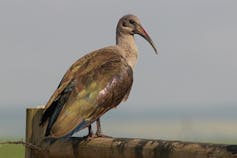
Carla du Toit
Various ibises and shorebirds (like sandpipers) are able to use the “sixth sense” of remote-touch. This enables them to identify vibrations in soil and water and utilize this information to locate concealed prey items. These vibrations are the consequence of the movement of prey in the soil when they are hunting for soft-bodied prey, such as earthworms. The birds can sense these vibrations using a special sensory organ in their beaks called a bill-tip organ, which evolved during the time of the dinosaurs.
Recently published research from my PhD at the FitzPatrick Institute of African Ornithology shows that Hadedas have this sixth sense too—something that had been assumed based on the anatomy of their beaks but never tested. Furthermore, my colleagues and I identified an additional aspect of their sixth sense: their capacity to employ it is closely associated with the quantity of water in the soil. This has likely contributed to the expansion of Hadedas’ range and has global implications for critical groups of littoral birds.
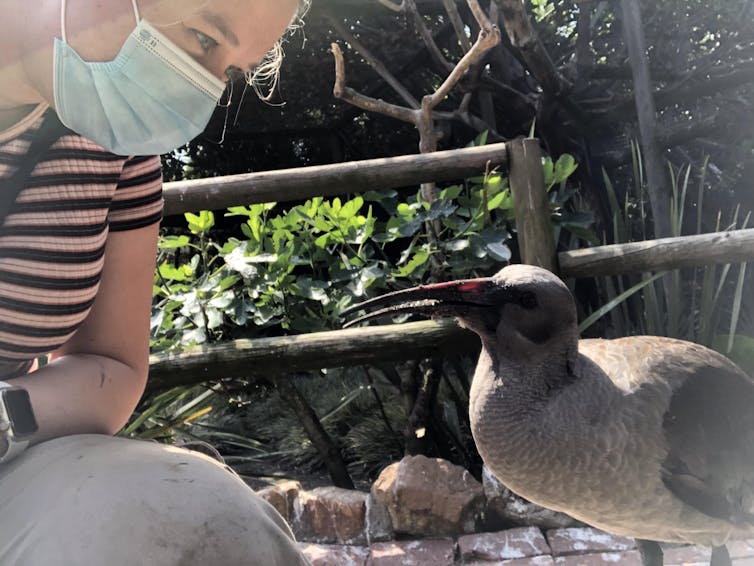
Evaluating Hadedas’s “sixth sense”
Based on the birds’ beak anatomy, my coauthors and I knew it was likely that hadedas used remote-touch while foraging. In order to verify this, we implemented a sequence of sensory assays, which are experiments that evaluate the impact of various sensory cues (such as sound or scent) on the speed at which an animal can identify a stimulus.
Hadedas that were confined in free-flight aviaries at a bird sanctuary were subjected to testing. We presented them with trays that were filled with soil and in which we had concealed a number of worms. We were aware that the birds were unable to observe the buried worms, but we also needed to ensure that they were not utilizing their hearing or fragrance to locate them. We masked any sounds the worms made by playing white noise from a speaker next to the trays. In order to prevent the hadedas from detecting the worms, we incorporated pulverized worms into the soil.
Nor did either of these influence the speed at which hadedas located their prey. Therefore, we deduced that they were not employing scent or hearing to locate the nematodes in our experiments.
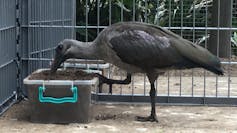
Carla du Toit
In order to determine whether hadedas were capable of utilizing remote-touch, we administered either live worms (which moved and generated vibrations) or deceased worms (which did not generate vibrations). The birds were able to locate the moving worms significantly more quickly than the deceased ones, suggesting that they are capable of detecting vibrations and utilizing them to locate prey in the absence of all other sensory information.
The significance of soil water in the context of remote-touch technology
We hypothesized that hadedas would be more successful in detecting vibrations (and finding prey) in wetter substrates because the mechanical waves (vibrations) that the birds perceive are transmitted more effectively in liquids than in gases. After confirming that hadedas were capable of using remote-touch, we investigated the impact of varying water levels in the soil on the speed at which they located their prey. This could potentially influence their foraging capabilities.
The birds were able to locate the nematodes significantly more quickly in wetter soils when they were using remote-touch, which corroborates our prediction. If dead worms were available (no vibrations), the addition of water to the soil had no effect on the prey capture rate. Consequently, it was not a result of the fact that the wetter soils were simpler to dig in. Hadedas were unable to detect living worms as quickly as deceased ones when the soil was excessively dry. This suggests that they were unable to employ remote-touch in arid soils and were instead forced to turn to random probing to locate prey.
In the wild, this would result in a two-fold increase in the time required to locate the same quantity of prey or a day-end prey count that is less than half that of a day in which remote-touch could be employed.
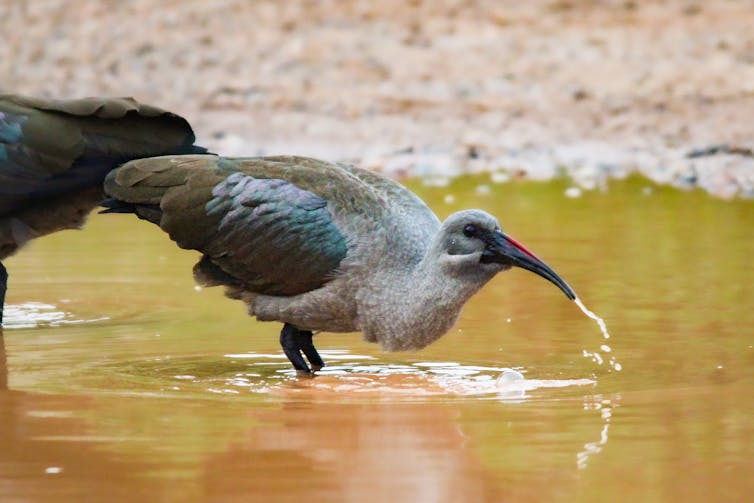
Carla du Toit
The impact of soil water and remote-touch on hadedas
Our results provide a fresh perspective on the expansion of hadedas’ distribution in South Africa. Previous studies have shown that their range expansion matches with increased areas of artificial irrigation, particularly around farms and large suburban areas. Our research indicates that hadedas require soil with sufficient moisture to detect their prey. This could partially account for their absence from more arid regions of the country.
Their reliance on moist soil could have a significant impact on their population in the event of an extended drought. Hadedas would encounter difficulty in locating prey due to the dry soil. The predicted trends in sub-Saharan Africa indicate that droughts and heatwaves will become more frequent and last longer as a result of climate change. Consequently, even ubiquitous garden birds such as hadedas may be at risk in the years ahead.
The broader perspective: a global warning?
Hadedas are known to forage in arid soils more than the majority of other remote-touch foraging bird species, despite the fact that they require water in soils to use remote-touch. Their bill-tip organ anatomy indicates hadedas have more sensitive bill-tip organs than ibises that forage in wetter substrates.
This, in conjunction with our recent discoveries, suggests that other remote-touch-investigating birds would be even more susceptible to reductions in substrate saturation. Several species, such as the spoon-billed sandpiper, are already critically endangered.
Therefore, our findings indicate that it is crucial to take into account the sensory needs of birds in their habitats, notably in relation to the water content of the substrates in which waders forage.
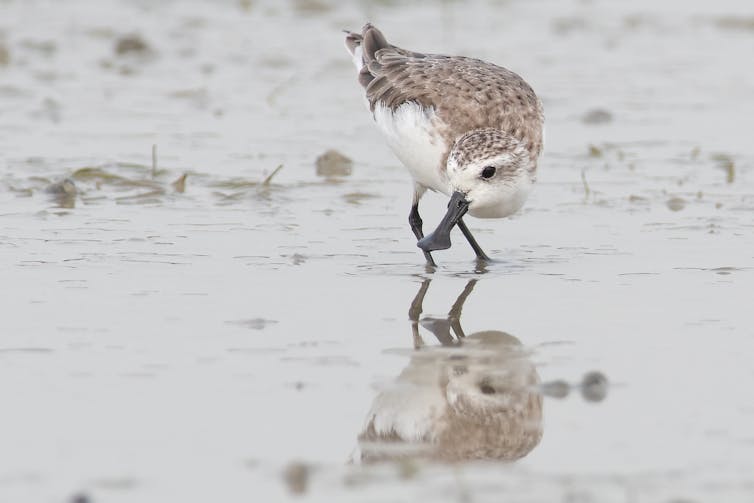
Therefore, although the Hadedas’ boisterous calls may be irritating at times, it is a somber realization that Africans may lose the sound of our natural alarm devices. We hope that our study will highlight this overlooked aspect of wading birds’ ecology and that we don’t oversleep this particular alarm call from nature.







